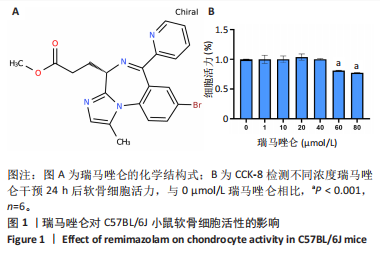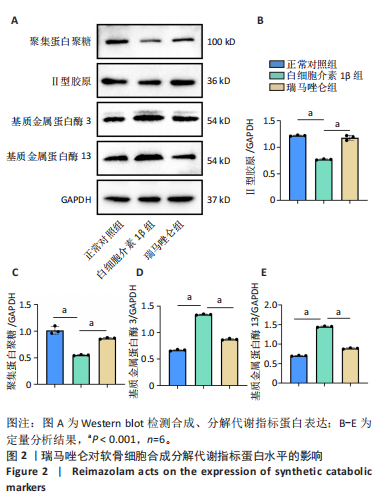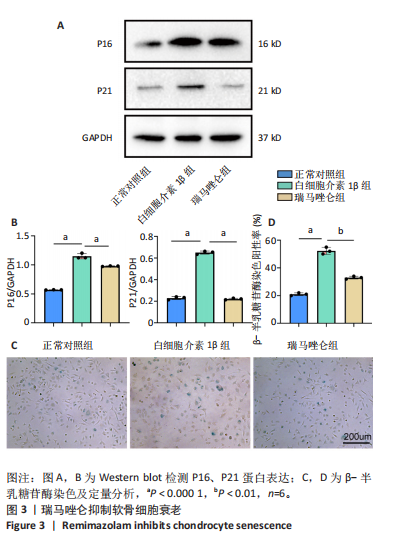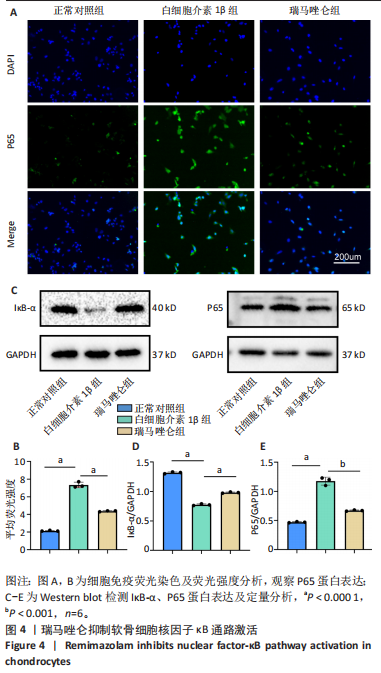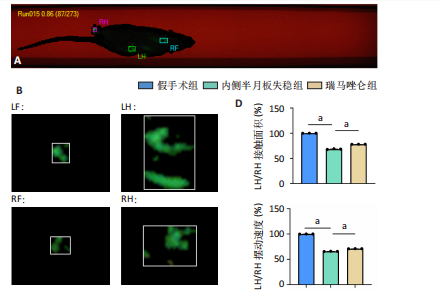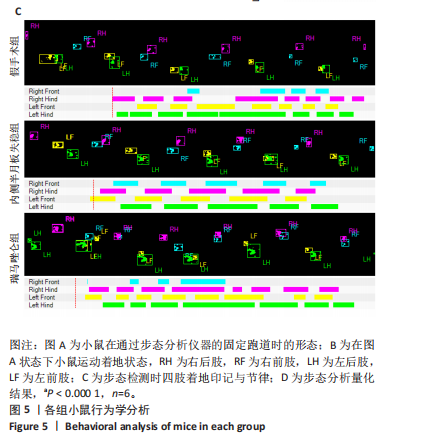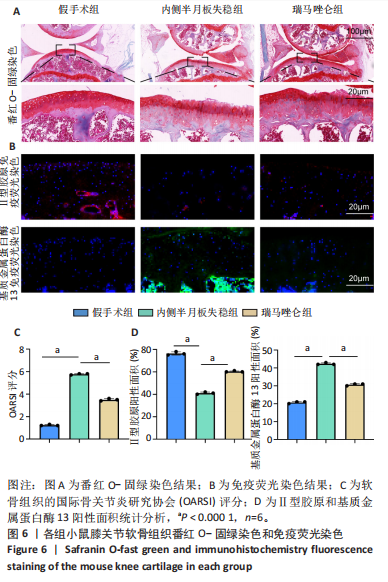[1] ZHU C, ZHANG L, DING X, et al. Non-coding RNAs as regulators of autophagy in chondrocytes: Mechanisms and implications for osteoarthritis. Ageing Res Rev. 2024;99:102404.
[2] MURPHY MP, KOEPKE LS, LOPEZ MT, et al. Articular cartilage regeneration by activated skeletal stem cells. Nat Med. 2020;26(10): 1583-1592.
[3] YAO Z, QI W, ZHANG H, et al. Down-regulated GAS6 impairs synovial macrophage efferocytosis and promotes obesity-associated osteoarthritis. Elife. 2023;12:e83069.
[4] WANG H, YUAN T, WANG Y, et al. Osteoclasts and osteoarthritis: Novel intervention targets and therapeutic potentials during aging. Aging Cell. 2024;23(4):e14092.
[5] MUTHU S, KORPERSHOEK JV, NOVAIS EJ, et al. Failure of cartilage regeneration: emerging hypotheses and related therapeutic strategies. Nat Rev Rheumatol. 2023;19(7):403-416.
[6] HUDSON HR, RIESSLAND M, ORR ME. Defining and characterizing neuronal senescence, ‘neurescence’, as GX arrested cells. Trends Neurosci. 2024;47(12):971-984.
[7] LI L, LI J, LI JJ, et al. Chondrocyte autophagy mechanism and therapeutic prospects in osteoarthritis. Front Cell Dev Biol. 2024;12:1472613.
[8] FENG K, YE T, XIE X, et al. ESC-sEVs alleviate non-early-stage osteoarthritis progression by rejuvenating senescent chondrocytes via FOXO1A-autophagy axis but not inducing apoptosis. Pharmacol Res. 2024;209:107474.
[9] LLAMASARES-CASTILLO A, UCLUSIN-BOLIBOL R, ROJSITTHISAK P, et al. In vitro and in vivo studies of the therapeutic potential of Tinospora crispa extracts in osteoarthritis: Targeting oxidation, inflammation, and chondroprotection. J Ethnopharmacol. 2024;333:118446.
[10] YE X, LI X, QIU J, et al. Alpha-ketoglutarate ameliorates age-related and surgery induced temporomandibular joint osteoarthritis via regulating IKK/NF-κB signaling. Aging Cell. 2024;23(11):e14269.
[11] ZHANG L, ZHAO D, LV H, et al. Remimazolam Alleviates Ventilator-Induced Lung Injury by Activating TSPO to Inhibit Macrophage Pyroptosis. Discov Med. 2024;36(187):1600-1609.
[12] ZHOU L, SHI H, XIAO M, et al. Remimazolam attenuates lipopolysaccharide-induced neuroinflammation and cognitive dysfunction. Behav Brain Res. 2025;476:115268.
[13] 贺光辉,原杰,柯燕琴,等.Hemin调控小鼠软骨细胞氧化应激的线粒体途径[J].中国组织工程研究,2025,29(6):1183-1191.
[14] GLASSON SS, BLANCHET TJ, MORRIS EA. The surgical destabilization of the medial meniscus (DMM) model of osteoarthritis in the 129/SvEv mouse. Osteoarthritis Cartilage. 2007;15(9):1061-1069.
[15] PENG Y, ZHANG Y, WANG W, et al. Potential role of remimazolam in alleviating bone cancer pain in mice via modulation of translocator protein in spinal astrocytes. Eur J Pharmacol. 2024;979:176861.
[16] GLASSON SS, CHAMBERS MG, VAN DEN BERG WB, et al. The OARSI histopathology initiative - recommendations for histological assessments of osteoarthritis in the mouse. Osteoarthritis Cartilage. 2010;18 Suppl 3:S17-23.
[17] WANG L, LUO R, ZHAO YX, et al. Ergosterol peroxide inducing apoptosis of human hepatocellular carcinoma by regulating mitochondrial apoptosis pathway. Zhongguo Zhong Yao Za Zhi. 2024;49(12):3365-3372.
[18] TONG W, GENG Y, HUANG Y, et al. In Vivo Identification and Induction of Articular Cartilage Stem Cells by Inhibiting NF-κB Signaling in Osteoarthritis. Stem Cells. 2015;33(10):3125-3137.
[19] LUO H, LI L, HAN S, et al. The role of monocyte/macrophage chemokines in pathogenesis of osteoarthritis: A review. Int J Immunogenet. 2024;51(3):130-142.
[20] WANG L, ZHANG J, LIANG L, et al. TDP-43 ameliorates aging-related cartilage degradation through preventing chondrocyte senescence. Exp Gerontol. 2024;195:112546.
[21] JEONG SW, LEE JS, KIM KW. In vitro lifespan and senescence mechanisms of human nucleus pulposus chondrocytes. Spine J. 2014; 14(3):499-504.
[22] RUTHS L, HENGGE J, TEIXEIRA GQ, et al. Terminal complement complex deposition on chondrocytes promotes premature senescence in age- and trauma-related osteoarthritis. Front Immunol. 2025;15:1470907.
[23] CHO Y, KIM H, YOOK G, et al. Predisposal of Interferon Regulatory Factor 1 Deficiency to Accumulate DNA Damage and Promote Osteoarthritis Development in Cartilage. Arthritis Rheumatol. 2024;76(6):882-893.
[24] TONG X, PORAMBA-LIYANAGE DW, VAN HOOLWERFF M, et al. Isolation and tracing of matrix-producing notochordal and chondrocyte cells using ACAN-2A-mScarlet reporter human iPSC lines. Sci Adv. 2024; 10(43):eadp3170.
[25] HORVÁTH E, SÓLYOM Á, SZÉKELY J, et al. Inflammatory and Metabolic Signaling Interfaces of the Hypertrophic and Senescent Chondrocyte Phenotypes Associated with Osteoarthritis. Int J Mol Sci. 2023;24(22):16468.
[26] LAI Q, LI B, CHEN L, et al. Substrate stiffness regulates the proliferation and inflammation of chondrocytes and macrophages through exosomes. Acta Biomater. 2025;192:77-89.
[27] CHOUBEY D, PANCHANATHAN R. IFI16, an amplifier of DNA-damage response: Role in cellular senescence and aging-associated inflammatory diseases. Ageing Res Rev. 2016;28:27-36.
[28] ARORA D, TANEJA Y, SHARMA A, et al. Role of Apoptosis in the Pathogenesis of Osteoarthritis: An Explicative Review. Curr Rheumatol Rev. 2024;20(1):2-13.
[29] SCHULZE-TANZIL G, HANSEN C, SHAKIBAEI M. Effect of a Harpagophytum procumbens DC extract on matrix metalloproteinases in human chondrocytes in vitro. Arzneimittelforschung. 2004;54(4): 213-220.
[30] HOSSAIN AS, CLARIN MTRDC, KIMURA K, et al. Fibrillin-1 G234D mutation in the hybrid1 domain causes tight skin associated with dysregulated elastogenesis and increased collagen cross-linking in mice. Matrix Biol. 2025;135:24-38.
[31] FU B, SHEN J, ZOU X, et al. Matrix stiffening promotes chondrocyte senescence and the osteoarthritis development through downregulating HDAC3. Bone Res. 2024;12(1):32.
[32] LANG Y, LI J, ZHANG L. O-GlcNAcylation dictates pyroptosis. Front Immunol. 2024;15:1513542.
[33] LI Y, YANG Q, HE G, et al. HcCnAα regulates NF-κB signaling in Hyriopsis cumingii by interacting with HcIKK and facilitating IκB phosphorylation. Int J Biol Macromol. 2025;289:138787.
[34] XU Y, BAO L, ZHAO R, et al. Mechanisms of Shufeng Jiedu Capsule in treating bacterial pneumonia based on network pharmacology and experimental verification. Chin Herb Med. 2024;16(4):656-666.
[35] ZHAO M, SONG X, CHEN H, et al. Melatonin Prevents Chondrocyte Matrix Degradation in Rats with Experimentally Induced Osteoarthritis by Inhibiting Nuclear Factor-κB via SIRT1. Nutrients. 2022;14(19):3966.
[36] 安方玉,颜春鲁,张艳霞,等.右归丸对膝骨关节炎大鼠PI3K/Akt/NF-κB信号通路的影响[J].中华骨质疏松和骨矿盐疾病杂志,2019, 12(5):479-487.
[37] WANG Y, LI Z, XU X, et al. Construction and validation of a senescence-related gene signature for early prediction and treatment of osteoarthritis based on bioinformatics analysis. Sci Rep. 2024;14(1):31862.
|
